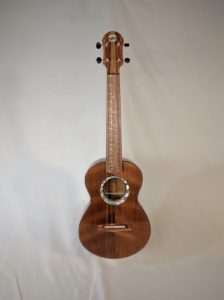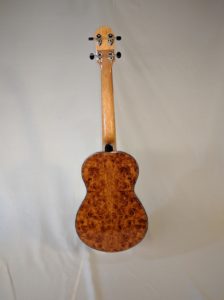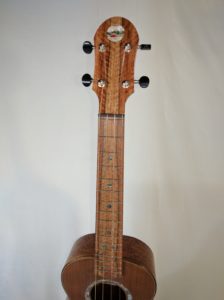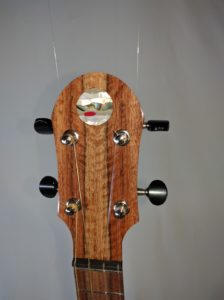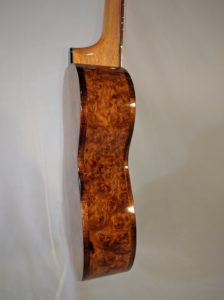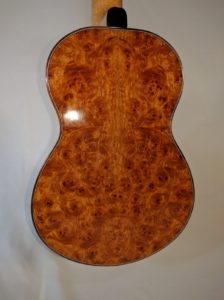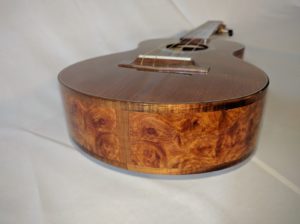The ukulele was one of a set built to emphasize the sound, with no heavy decoration (‘bling’) such as pearl inlay. It involves what I have learned from previous builds, what has succeeded and what has not worked so well. I think I have succeeded. This uke sounds great. Plenty of volume and sustain, plenty of base (I have it strung with low-G strings), evenly balanced between the treble side and the base side, and it continues to be balanced up the neck.
This ukulele has a redwood top, with a broad curl to the redwood. This gives a chevron patterned iridescence to the top. The redwood is recycled from wood that used to be water tanks on top of apartment buildings in New Your City. The back and sides are Pennsylvania black locust (a very good local tone wood) laminated with an amboyna burl veneer. (OK, I can’t resist a bit of bling.)
Black and white purfling, curly koa binding, asymmetric pink abalone pearl rosette, Spanish cedar neck (which is just the name, it is neither from Spain nor is it a cedar, it is really a mahogany relative from Central and South America.) The fingerboard, headplate and bridge are a wood called Casuarina equisetifolia. This tree was planted all over south Florida, and it is now considered an invasive species. It is very hard and heavy, comparable to the ebonies. This is from some I cut a while back. Since I am cutting my own fingerboards out of a log, I can do things like making a book-matched fingerboard here, the pattern of which extends up into the heaadplate. Bone saddle and black corian nut. Paua abalone pearl fingerboard marks and fingerboard side dots. “Jupiter” logo on the headstock.
Price: $600
